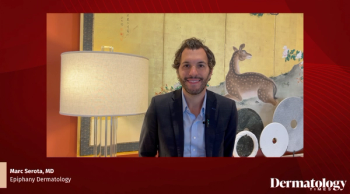
Marc Serota, MD, discusses using ruxolitinib cream to safely maintain repigmentation, minimize steroid-related adverse effects, and enhance outcomes when combined with phototherapy.

Marc Serota, MD, discusses using ruxolitinib cream to safely maintain repigmentation, minimize steroid-related adverse effects, and enhance outcomes when combined with phototherapy.

Explore insights from SDPA leaders Renata Block, DMSc, MMS, PA-C, and Sarah Vicari, MMS, PA-C, on mentorship, volunteerism, and fostering growth for PAs.

Panelists discuss how the AHEAD recommendations establish structured, patient-centered treatment targets that help clinicians achieve measurable and lasting success in atopic dermatitis management.
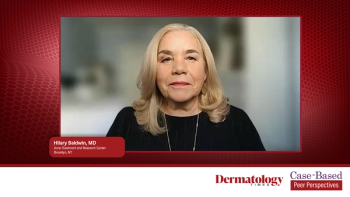
Hilary Baldwin, MD, introduces the series and reviews acne pathogenesis, mechanisms of topical therapies, and key barriers to adherence in everyday practice.

A panelist discusses how the rise of convenient and accessible oral therapies is poised to redefine systemic treatment strategies, payer decisions, and clinical guidelines in dermatology.

Allergan Aesthetics pioneers regenerative skincare through secretome science, enhancing skin health with fibroblast-derived exosomes for transformative results.
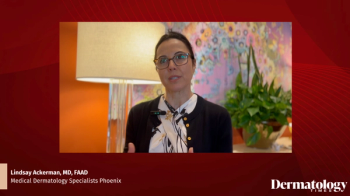
Lindsay Ackerman, MD, explains the importance of transparency when prescribing medications with boxed warnings.

Discover how Prithwiraj Maitra, PhD, advances skin care innovation with exosomes, emphasizing scientific validation and ingredient transparency in cosmetic formulations.

New findings from LEO Pharma reveal chronic hand eczema affects 1 in 10 adults, highlighting the need for improved recognition and management in dermatology.

Advances in atopic dermatitis research could bring longer-lasting biologics and improved treatment adherence.
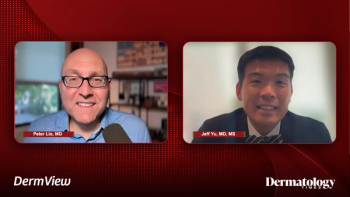
Panelists discuss how tapinarof showed strong efficacy in the Adoring trials, with 45% to 46% Investigator’s Global Assessment (IGA) success and 55% to 60% Eczema Area and Severity Index (EASI-75) achievement at 8 weeks. However, they question real-world adherence to daily application over such extended periods and note folliculitis as a notable adverse effect occurring in over 5% of patients.

Panelists discuss how ruxolitinib cream demonstrated impressive efficacy in the TRU83 trial, with over 50% of patients achieving near-complete clearance at 8 weeks using the 1.5% formulation, while acknowledging that the Janus kinase (JAK) inhibitor’s broad mechanism makes its effectiveness unsurprising despite concerns about the boxed warning.
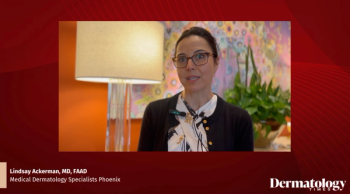
The Phoenix-based dermatologist encourages innovative and patient-tailored strategies to optimize pigment restoration.

At Fall Clinical 2025, experts discussed the science behind oral IL-23 inhibition, potentially ending the injection-only era for psoriasis therapy.

A panelist discusses how sustained efficacy, convenience, and safety of new oral therapies could transform pediatric psoriasis care and inform future clinical standards.

Chava Wald shares her inspiring journey with AD, advocating for patient empowerment and compassionate care during Eczema Awareness Month.

Aaron Sookhoo, PA-C, and Andrew Mastro, PA-C, outline their long-term vision for the National Dermatology Leadership Summit, promoting collaboration and advocacy.

Panelists discuss how long-term management of melasma and postinflammatory hyperpigmentation requires lifelong maintenance regimens including retinoids for all patients, consistent sunscreen use with reapplication, proper diagnosis through biopsy when treatments fail to respond, and recognition that patients may have multiple concurrent conditions requiring different treatment approaches.

Discover how the National Dermatology Leadership Summit will unite PAs and NPs to enhance collaboration, education, and advocacy in dermatology.

Panelists discuss how long-term use of JAK inhibitors provides durable, real-world efficacy and consistent disease control for patients with atopic dermatitis.

Lindsay Ackerman, MD, outlines how ruxolitinib topical has transformed the clinical approach to vitiligo.

At Fall Clinical 2025, Ron Vender, MD, discussed the evolving psoriasis treatment landscape and the persistent challenge of managing palmoplantar pustulosis.

Gene expression profiling may allow clinicians, according to Farberg, to predict patient responses to targeted treatments.

Peter Lio, MD, believes that collaboration between science and industry is vital for translating research into meaningful patient benefits.

At Fall Clinical 2025, Marc Serota, MD, discussed how GLP-1 therapies, new CSU treatments, and hybrid care models are reshaping dermatologic practice heading into 2026.

Clinicians are now aiming for treatment targets such as NRS 0–1, IGA 0–1, and EASI 90 to define successful AD management.

At Fall Clinical 2025, Shawn Kwatra, MD, presented insights on managing various cases of chronic itch, as well as understanding the OX40 ligand pathway as the “prequel to inflammation.”

Discover essential dermatology insights from experts at the Fall Clinical Conference 2025, featuring innovative treatment tips and patient care strategies.

Emerging skin treatments present unique clinical challenges that must be anticipated by clinicians.

Recent FDA approvals for topical roflumilast and ruxolitinib down to age 2 mark major milestones in managing pediatric AD, according to Peter Lio, MD.